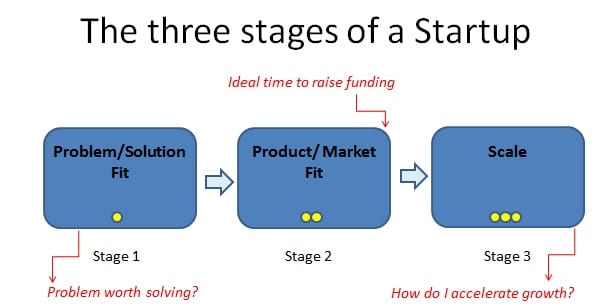A new business is easier to start in modern times relative to ten or twenty years ago. Startups are becoming an engine for economic growth across the world. But there is a problem. Startups firstly consume a lot of resources – time and money. And most startups (products) fail.
Ash Maurya’s book ‘
# 1. You don’t need a Business Plan
“What separates successful startups from unsuccessful ones is not necessarily the fact that successful startups begin with a better initial plan (or Plan A) but rather that they find a plan that works before running out of resources”. Ash Maurya– Running Lean: Iterate from Plan A to a Plan that Works.
Putting your thoughts down on paper is a wonderful and valuable exercise. But at an early stage of a business, a formal business plan document is not required. Traditionally, business plans have been used to document Plan A. But few people take the time to actually read business plans. More importantly, since many Plan As are likely to be proven wrong, spending several weeks writing a 60-page business plan largely built on untested hypotheses is a form of waste.
[At the appropriate juncture, generally when external investment is being sought, you will need a business plan with professional financial projections. In Running Lean, Maurya identifies the three stages of a startup. For the purposes of this post, I am focusing on Stage 1 which applies to early stage startups and is described as Problem/Solution Fit].
# 2. Lean Canvas is a startup blueprint
Instead of a business plan, Ash Maurya recommends using a one-page business model format called Lean Canvas – which can be completed in twenty minutes to allow you to communicate your business model with internal and external stakeholders. It captures the same core elements you find on a business plan, but because it fits on one page, it’s a lot more concise, portable and readable.
It is hugely important to think about and document your hypotheses or assumptions as to what will make your business a success. Completing your Lean Canvas provides a systematic structure to begin this process but it is only the start.
- Document your Plan A (s)
- Identify the Riskiest Parts of your Plan (s)
- Systematically test your Plan
You will notice that you can have more than one plan or canvas. Most startups will identify several potential customer groups possibly requiring changes to specific elements of your business model. A few other points to note:
- It is advised to sketch your first canvas in one sitting. Be concise.
- It’s OK to leave sections blank. One section that is often left unfilled is Unfair Advantage. It can be difficult to identify at an early stage. Leaving this section blank is a reminder that you need to find one!
- Think in the present. The Lean Canvas should be completed given the current reality and required next steps. For instance, to complete the Channels section of your Canvas, you need to brainstorm how to ‘build a significant path to customers’. You may be tempted to list lots of marketing activities here. But at an early stage what you really need is to figure out how to reach 10 potential customers in your chosen segment so that you can go talk to them. Ash Maurya talks about defining ‘the runway’ that you need for your startup when completing each element of your Canvas. This keeps a focus on the next action that is required.
# 3. Life’s too short to build something that nobody wants
A central theme of Running Lean is that a successful business must identify your customer’s ‘must-solve’ problems and that you must iterate your solution whilst engaging with customers, valuing their feedback both what they say and what they do.
- The very first step is to identify specific customer segments and list their top one to three problems. The advice is to think in terms of ‘the job’ that customers need done.
- Test and refine your vision by measuring how customers behave. This requires that you engage with customers throughout the product development cycle – tackle both product and market validation in parallel using short iterations.
# 4. Draw a line in the sand
Creating your first Lean Canvas draws a line in the sand. The next step is to share your Lean Canvas with trusted mentors and business advisors. It is important to identify the riskiest parts of your plan. Discussing your Canvas will also help clarify the next steps to be taken – which should be to test your plan.
Conclusion
With so many balls in the air, it can be very easy for startup promoters to lose focus, get distracted or indeed not know if they are making real progress until it is too late. A key principle of Lean Startup is ‘Validated Learning’ which means that the job of the startup promoter is to learn how to build their business not just build a product. By defining a systematic process which includes the Lean Canvas, the Running Lean methodology provides a superb roadmap to undertake this learning and thereby increase the odds of success.
This post has not addressed each of the 9 Building Blocks of the Lean Canvas. For anyone interested in that level of detail, I highly recommend the FREE 7-Day Lean Canvas Course of video lessons by Ash Maurya.
Did you like this article?

- Please share it with your network, we’d really appreciate it!
- Would you like to write for Tweak Your Biz? Or sign up for our RSS?
- An outstanding title can increase tweets, Facebook Likes, and visitor traffic by 50% or more. Generate great titles for your articles and blog posts with the Tweak Your Biz Title Generator.
Connect with Tweak Your Biz on: 


Images: ”Source: Adapted from Figure 1.3 Page of Ash Maurya’s Running Lean on page 8“


